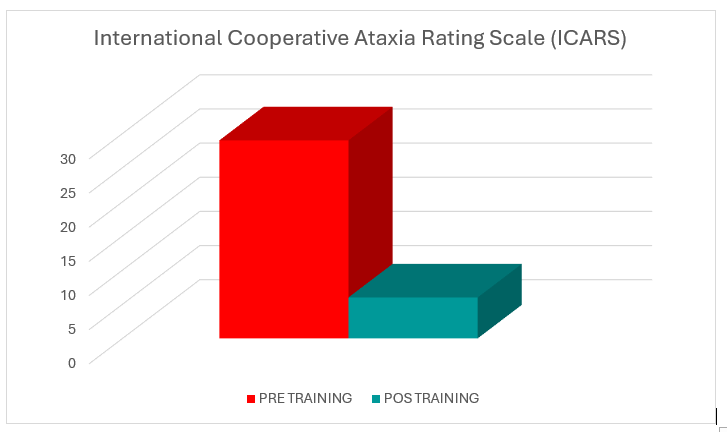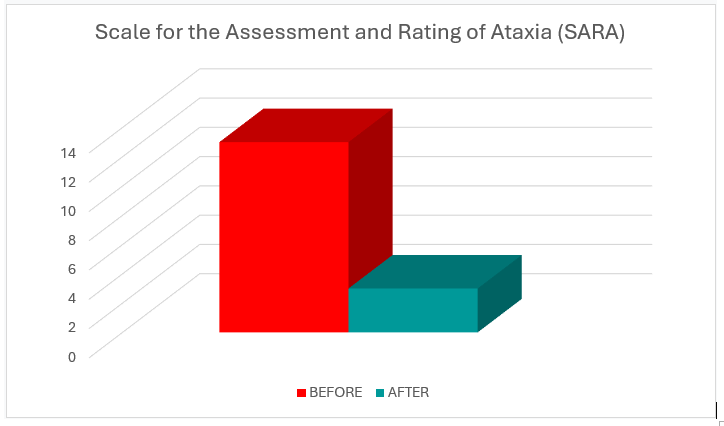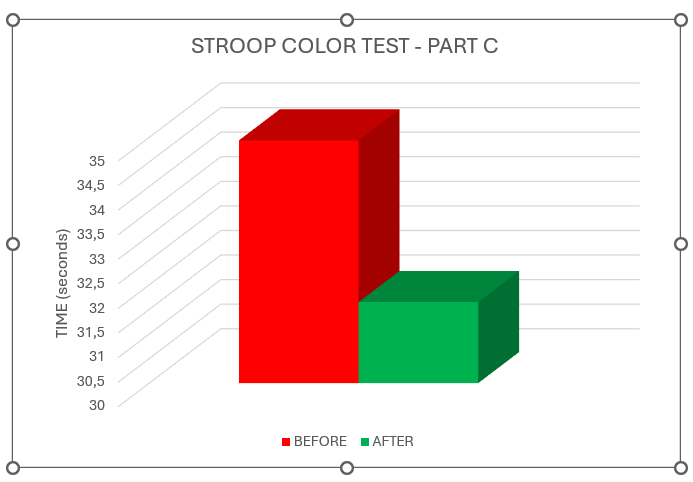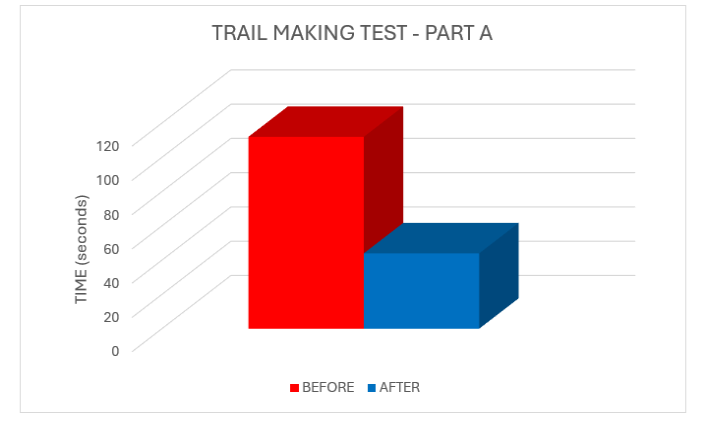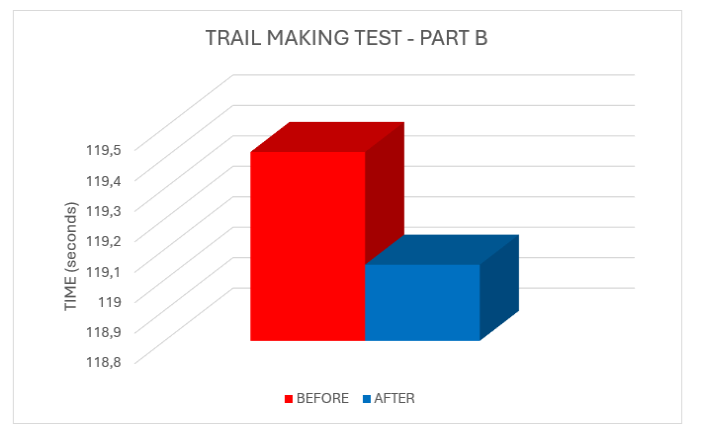Category: Ataxia
Objective: The aim of this research was to develop and verify the effects of a Non-Invasive Neuromodulation protocol associated with Neurofunctional Physiotherapy on motor functions, cognitive functions and the severity of ataxia in a patient with SCA1.
Background: Type 1 Spinocerebellar Ataxia (SCA1) is a genetic disease and includes – in addition to the classic ataxia common to cerebellar disorders – a range of neurological manifestations that may include tremors, oscillations, motor incoordination, postural changes, cognitive changes, dysarthria, among other signs. There is a scope of evidence that transcranial direct current stimulation (tDCS) can be considered an effective approach to promote plasticity in patients with cerebellar ataxia with significant motor, cognitive and emotional symptoms. When a neuromodulation intervention is complemented by other functional exercices and interventions, better the results.
Method: A Non-Invasive Neuromodulation protocol (tDCS) associated with Neurofunctional Physiotherapy exercises was developed after a thorough evaluation of the patient. The protocol last 25 days, 5 days per week. tDCS was applied for 25 min, with 2 mA direct current targeting the cerebellum via an anodal electrode and a cathodal electrode placed over tenth thoracic vertebra (T10). The stimulus was paired with 25 min of simultaneous neurofunctional and cognitive training, and after this, followed by another 25 min of neurofunctional physical exercises directed by a physical therapist with expertise in movement disorders. The motor symptons and ataxia impairment were measured by SARA, iCARS scale and TUG, and the cognitive aspects were measured by TMT-A, TMT-B and Stroop Color Test.
Results: The patient successfully completed twenty five tDCS sessions with no complications and showed improvement in all evaluated parameters: 77% improvement in SARA, 80% improvement in ICARS. Cognition flexibility improves in all test evaluations, with a better execution time and also better accuracy in TMT and STROOP Color Test.
Conclusion: Results from this case report suggest that consecutively administered non invasive neuromodulation by tDCS paired with neurofunctional physical therapy also improves motor and cognitive symptoms, regressing the severity of ataxia, representing a promising therapeutic approach in neurorehabilitation.
INT COOPERATIVE ATAXIA RATING SCALE
SCALE OF ASSESSMENT AND RATING ATAXIA – SARA
STROOP COLOR TEST – PART C
TRAIL MAKING TEST PART A
TRAIL MAKING TEST PART B
To cite this abstract in AMA style:
C. Bedeschi, P. Junior. Transcranial Direct Current Stimulation and Neurofunctional Physical Therapy Improves Motor and Cognitive Symptoms in a Patient with Type 1 Spinocerebellar Ataxia – A Case Report [abstract]. Mov Disord. 2024; 39 (suppl 1). https://www.mdsabstracts.org/abstract/transcranial-direct-current-stimulation-and-neurofunctional-physical-therapy-improves-motor-and-cognitive-symptoms-in-a-patient-with-type-1-spinocerebellar-ataxia-a-case-report/. Accessed December 18, 2025.« Back to 2024 International Congress
MDS Abstracts - https://www.mdsabstracts.org/abstract/transcranial-direct-current-stimulation-and-neurofunctional-physical-therapy-improves-motor-and-cognitive-symptoms-in-a-patient-with-type-1-spinocerebellar-ataxia-a-case-report/

